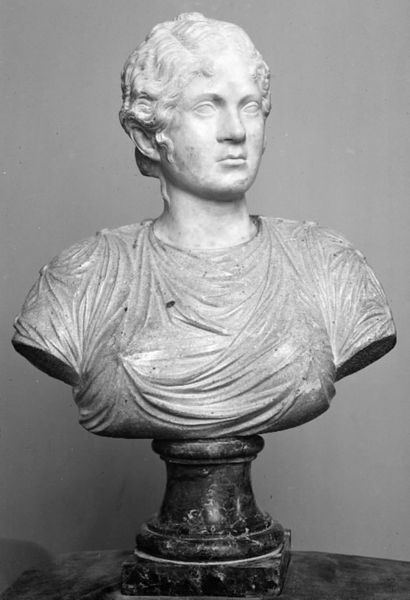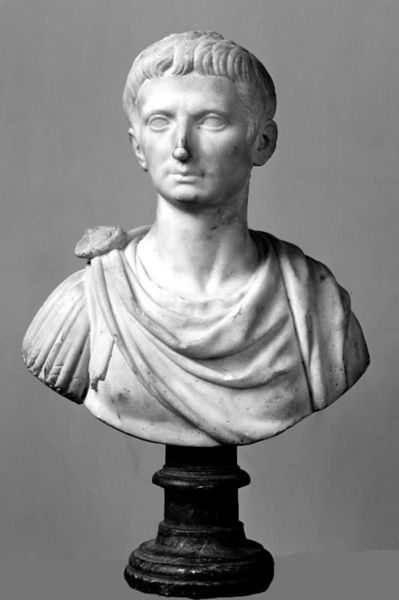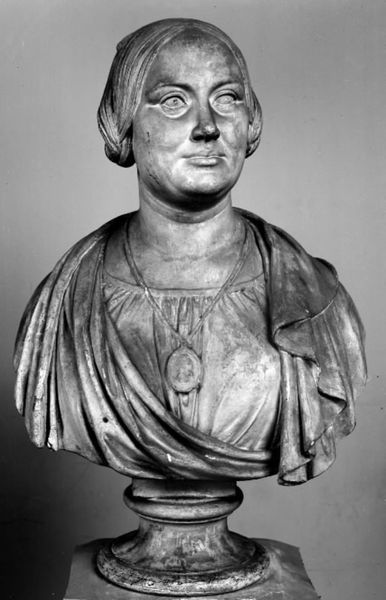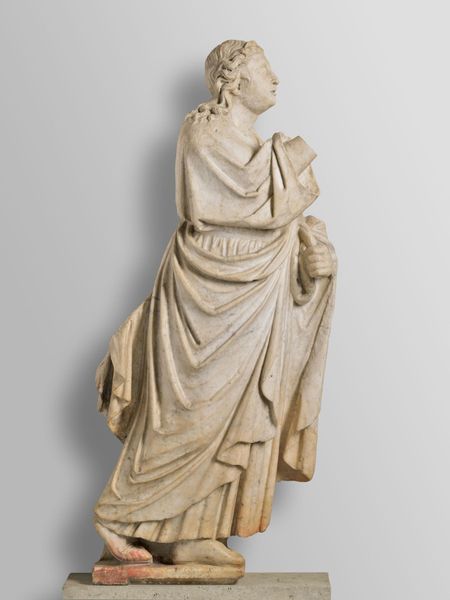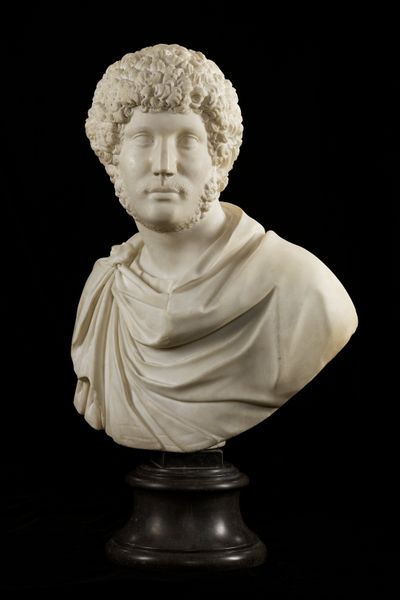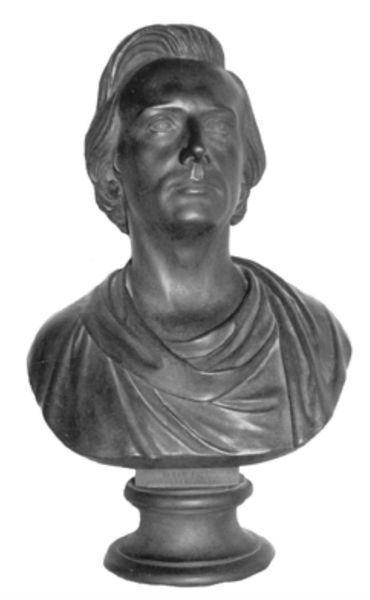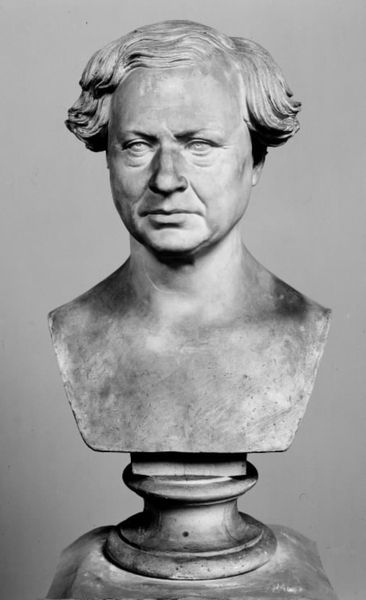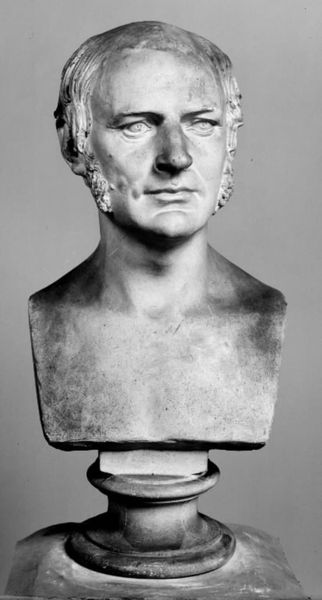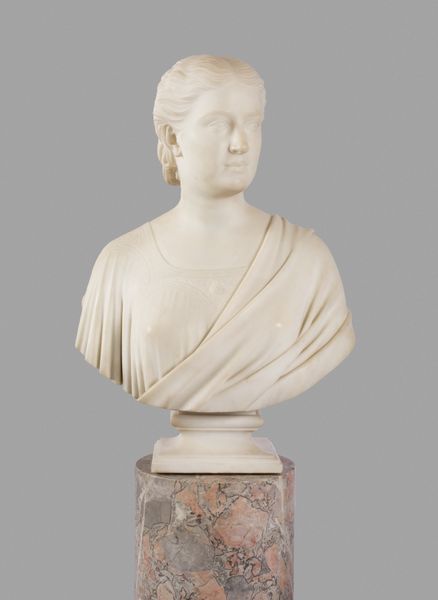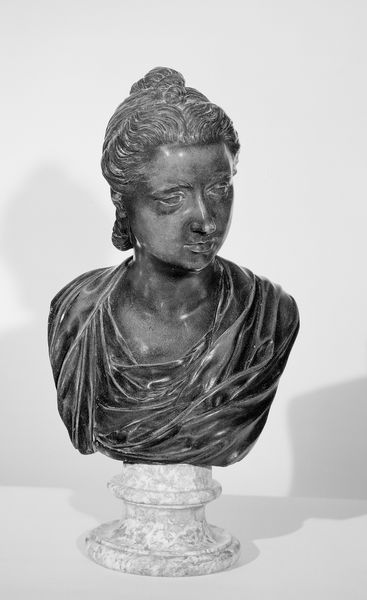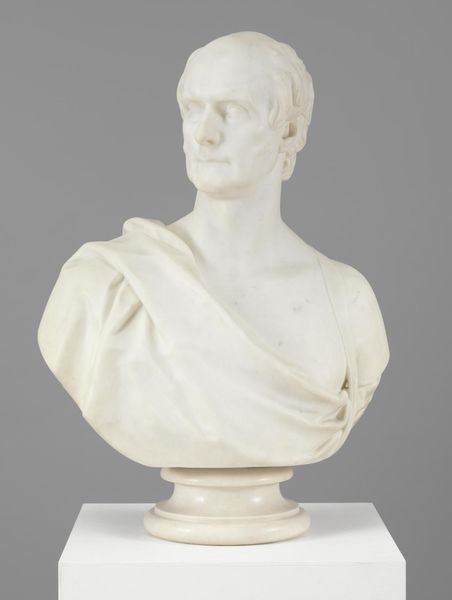
bronze, sculpture
#
portrait
#
sculpture
#
greek-and-roman-art
#
classical-realism
#
bronze
#
figuration
#
ancient-mediterranean
#
sculpture
#
history-painting
Dimensions: height 89 cm, weight 175 kg, width 43 cm, depth 28 cm, height 121 cm
Copyright: Rijks Museum: Open Domain
Bartholomeus Eggers created this lead bust of Julius Caesar sometime in the second half of the 17th century. Eggers worked in the Netherlands, where the visual language of classical antiquity was often used to lend authority to the powerful. Here, Caesar’s status is indicated by his laurel wreath and toga. During the 17th century, powerful men were often depicted with the attributes of Roman emperors, thus associating themselves with the ideals of Roman imperial power. Consider the Dutch Republic in which Eggers was working: it was governed not by a monarch, but by an oligarchy who might have sought to associate themselves with the glory of the Roman Republic, which they perhaps considered to be a more appropriate precedent for their own style of government. By looking at Dutch political history, histories of costume, and the biographies of Eggers’ patrons, we can begin to interpret the social and political forces that shaped this work.
Comments
rijksmuseum about 2 years ago
⋮
The series of twelve marble busts from which these four figures were cast represented the first twelve emperors of Rome. Although the Dutch word ‘keizer’ derives from Caesar’s name, he was never an emperor. His adoptive son Augustus was the first Roman emperor. Yet because Caesar had assumed absolute power, he is generally included in the series.
Join the conversation
Join millions of artists and users on Artera today and experience the ultimate creative platform.
